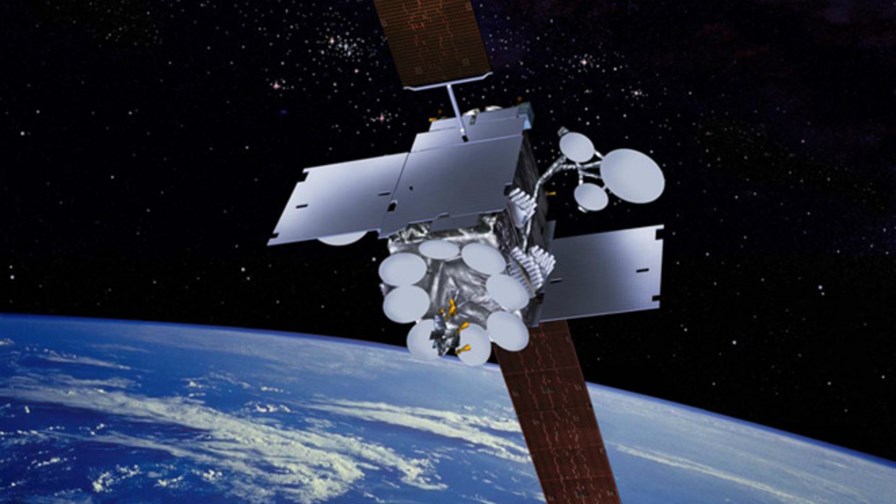
via Flickr © sam_churchill (CC BY 2.0)
- Announces global IoT and M2M strategy
- Deep partnerships with VARs
- Single network and single SIM
- Two dedicated new services
Satellite communications services company Inmarsat has announced its IoT and M2M play and "a new vision for extending the reach of the Internet of Things." It is to be called the "Internet of Everywhere", which is fair enough given that Inmarsat really does have world-wide coverage, unlike a previous service provider that decided to call itself "Everything Everywhere" when it was never anything of the sort.
Inmarsat is a UK satellite telecommunications company providing telephone and data services to users worldwide, via portable or mobile terminals which communicate with ground stations through eleven geostationary telecoms satellites.
The company's new new machine-to-machine (M2M) and the Internet of Things (IoT) strategy – the ‘Internet of Everywhere’ - was announced yesterday at the CTIA Super Mobility 2015 show in Las Vegas, Nevada.
Inmarsat says it will leverage its highly reliable, tried-and-tested global mobile satellite network to power and control of its customers fixed and mobile assets, no matter where on earth they might be.
As part of that strategy the company will also strengthen its partnerships and alliances with strategic Value Added Resellers (VARs), to provide customers with bespoke, end-to-end services, which "enable operational visibility and control of their fixed and mobile assets - anywhere".
David Wigglesworth, the Vice President of Internet of Everywhere at Inmarsat, commented, “The reach, reliability and return on investment capabilities of Inmarsat’s network are enabling the Internet of Everywhere. We are empowering existing and prospective VAR partners to offer unparalleled worldwide connectivity to their M2M and IoT customers through a single network and a single SIM. No other mobile satellite company can offer such a diverse range of M2M connectivity options, and our VARs can build on that diversity to deliver truly tailored solutions for their customers’ connectivity challenges.”
Two new dedicated M2M services
Inmarsat's unique strength is that its services are truly global so customers can be assured of connectivity wherever they may be located and even if they are moving or transferred from one region to another. Furthermore, Inmarsat operates in conditions where cellular and other satellite services are congested, degraded or simply not available. It claims 99.9 per cent availability across its L-band satellite network and that its solutions integrate very easily with existing infrastructure and can scale as needs change.
Inmarsat also claims it offers unique Return on Investment (ROI)-driven connectivity asserting that M2M services derive real value from a single global network, single operator and single SIM, so benefitting customers via improved operating efficiencies and cost and resource savings.
Inmarsat says these benefits are delivered through two dedicated M2M Inmarsat services:
The first is IsatData Pro (IDP) which is purpose-built for M2M and operating in near real-time worldwide, IDP is a low data rate messaging service that is pretty near perfect for monitoring and telemetric tracking of remote fixed or mobile assets where battery operation is required, such as as in the container industry and gas flow metering.
The second service is BGAN M2M, a global worldwide duplex IP data service for monitoring and control of fixed and mobile assets in unmanned or remote locations that need higher-bandwidth capabilities. It is is designed for use by customers with data volume requirements that run from megabytes to gigabytes and for applications such as real-time surveillance, high-volume metering and telemetry.
Genuine global coverage
There are three types of coverage related to Each Inmarsat I-4 satellite provides three types of coverage, global spot beam, regional spot beam and narrow spot beam.
In the first instance, each satellite is equipped with a single global beam that covers up to one-third of the Earth's surface, apart from the poles. Overall, global beam coverage extends from latitudes of −82 to +82 degrees regardless of longitude.
In the second instance each regional beam covers a fraction of the area covered by a global beam, but collectively all of the regional beams offer virtually the same coverage as the global beams. Use of regional beams allow user terminals (or mobile earth stations as they are called) to operate with significantly smaller antennas. Regional beams were introduced with the earlier Inmarsat generation iI-3 satellites. Each I-3 satellite provides four to six spot beams whereas each I-4 satellite provides 19 regional beams.
In the third and final instance, narrow spot beams are provided by the three Inmarsat-4 satellites. Narrow beams vary in size but do tens to be several hundred kilometres across. Thus, the narrow beams, while much smaller than the global or regional beams, are far more numerous and hence offer the same global coverage. Narrow spot beams allow yet smaller antennas and much higher data rates. They form the backbone of Inmarsat's handheld (GSPS) and broadband services (BGAN). This coverage was introduced with the I-4 satellites and each of them provide some 200 narrow spot beams.
Email Newsletters
Sign up to receive TelecomTV's top news and videos, plus exclusive subscriber-only content direct to your inbox.




